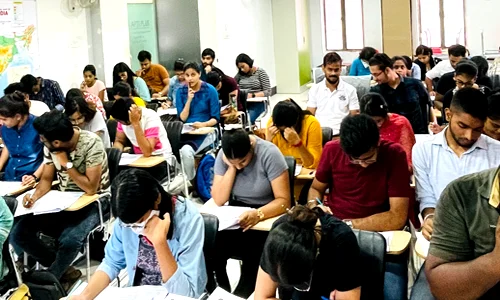



Quality Control Orders (QCOs) in India, intended to improve product quality, have largely targeted raw materials and intermediate goods rather than finished products. This has increased input costs, disrupted supply chains, and reduced trade competitiveness, particularly affecting MSMEs. Imports of critical inputs have fallen, exports have seen short-term gains but long-term decline, and domestic suppliers have gained market concentration advantages. Aligning QCOs with global standards, focusing on finished goods, strengthening testing infrastructure, and supporting MSMEs are key steps to mitigate these challenges.
Click to View MoreThe government is revising SEZ norms to help exporters access the domestic market amid steep US tariffs. Proposed measures include allowing reverse job work, improving utilization of SEZ units, extending export obligations, and easing financial stress. Sectors like gems and jewellery, heavily reliant on SEZs, are most affected. Challenges include low R&D investment, limited skill development, negative trade balances, and low FDI. Reforms aim to boost manufacturing efficiency, safeguard jobs, and enhance global competitiveness.
Click to View More
India aims to become a $30 trillion economy in the next 25 years, driven by sustained GDP growth, strategic government policies, and long-term planning. While past growth trends and currency factors make this projection plausible, challenges such as slowing growth rates, inflation, and infrastructure gaps remain. Achieving this goal will require multi-dimensional efforts in trade, investment, technology, and human capital development, positioning India as a major global economic power by 2050.
Click to View MoreThe government has reduced customs duties on gold imports to lower gold prices, curb smuggling, and boost official trade. While these measures helped reduce illegal imports and bring some price relief, gold prices remain high due to global economic factors, currency depreciation, and strong demand. Moving forward, further duty cuts, better regulation of digital gold, strengthening anti-smuggling efforts, and revitalizing gold monetisation schemes are recommended to stabilize prices.
Click to View More
The US imposed 50% tariffs on Indian imports, citing trade deficits, market access issues, and India's Russian ties. This threatens India's exports, particularly electronics, pharmaceuticals, and textiles, impacting economic growth and MSMEs. India is responding through dialogue, diversifying trade relations, strengthening domestic manufacturing, and advocating for multilateralism to navigate these pressures.
Click to View More
© 2025 iasgyan. All right reserved